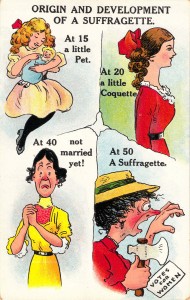Over the past year, I’ve had a number of conversations about teaching writing with faculty members teaching courses ranging from Intro to Methods to Senior Projects. These courses require different kinds of writing and different modes of thinking. Intro instructors are most concerned with description, that is, teaching students how to describe sociological patterns they observe in the world, or to describe the sociological significance of some concept from the course. In Methods, instructors add a focus on synthesis, that is, bringing themes or strains from existing literature together to point toward a research question that the student can write a proposal to investigate. Methods courses also often require critical writing, especially when assignments ask students to identify strengths or weaknesses in the methods of studies they read. Senior Projects instructors combine synthetic and critical summaries of existing literature with descriptive analysis of data students have collected by themselves.
It might be surprising that with the different kinds of writing being taught in these courses, and the different kinds of assignments they use, there is one instructional tool has proved useful in all of them. But there is. It’s called a reverse outline.

Many of us teach our students to write outlines before they try to write papers, but this is not always effective. Outlines only work well when students already have some idea of what they want to say. They presume that before sitting down to write, students know what needs to be described, synthesized, or critiqued, and that the problem separating them from a good finished paper is one of organization, not content.
Experience across the Minnesota sociology curriculum shows that this is not usually the case. For better or for worse, students often sit down to write having no idea what they’re going to say. In this situation, writing an outline is no easier than writing a paper, and it can actually be counterproductive, because it gives students the idea that they have to have full command of their argument before they begin writing. This is not helpful, and for many, it’s intimidating. It prevents students from engaging in the descriptive, synthetic, and critical analysis of course materials, and makes them think instead about things like paragraphs and sections.
This is why I recommend something else: a REVERSE outline. The reverse outline is conceptually the same as an outline – it highlights the main points of an argument and charts how they are structured in a paper. The difference is that the reverse outline isn’t written until after the student has begun to draft their work. Whereas an outline asks students to organize their thoughts before they put a single thing down on the page, a reverse outline invites them to take risks with their writing, knowing they’ll be able to come back later to structure their arguments. It asks them to be adventurous early in the writing process, and only later to apply rigid requirements for style and organization to thoughts that they have now been able to develop fully. This is extremely effective for teaching the basic skills of descriptive, synthetic, and critical writing, because it allows students to think about content and organization at the same time. Unlike an outline, which presumes that content has been mastered before writing begins, it acknowledges that the content will be revised and improved through the process of organizing it.
The reverse outline is a good way for students to transfer their unstructured thoughts on course concepts and materials into organized writing that follows a logical flow. It’s also a great intermediate assignment between first and second drafts of a paper. But most importantly, it’s an extremely useful way for students to develop their own writing skills through evaluation of others’ work. Particularly in upper level courses, students often have a hard time writing literature reviews that synthesize thematic areas and broad ideas from existing work. Asking them to read a simple journal article and write a reverse outline of it is a great way to help them see how an effective literature review points toward a research question. Likewise, students in introductory courses can learn a great deal from reverse outlining short think pieces from sources like Contexts or Sociological Images, or from popular press sources.
As with the five-minute workshops I discussed in an earlier post, the idea with reverse outlining is to integrate writing instruction with course content that an instructor is already using. If you have a multi-draft assignment coming up, give it a try. If you don’t, ask your students to write a reverse outline of an upcoming reading. Either approach should help with teaching the integration between content and organization that students so often struggle with.



